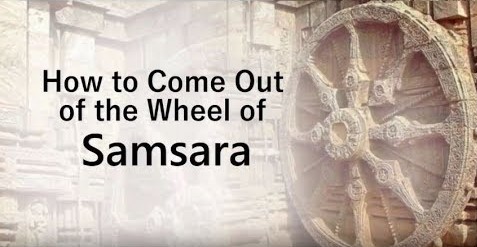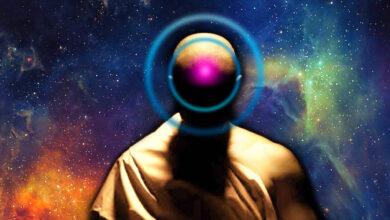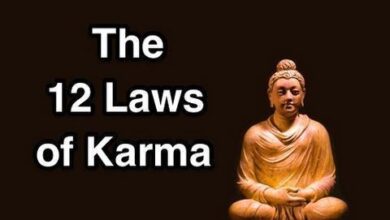
Samsara In Buddhism
Everything in the universe transient and nothing stays forever, it is the law of nature. All living beings experience “Birth, old Age, Sickness and Death” while objects go through “formation, existence, ruin and emptiness”, nothing is permanent.
In today world, we called it a Vanity Fair. Avaricious people could not tame the thirst of pursuing fame and fortune, seeking unlimited wealth. Plotting against each other and allows jealousy and hatred to consume them. The ignorance of the true meaning of life. All these contributed to “The Samsara, the turning Wheel of Existence.”
What is Samsara? It is a Sanskrit/ PAL term meaning “rebirth” or “eternity”. It’s also the basis of a major belief of many Indian religions and is the philosophy of the Hindu, Buddhist, Jain, and Muslim faiths. Quite popularly, it’s the journey of life through time.
Samsara, according to the Hindus, is that period of transition, “the turning of the wheel of life” or “eternity” between the causal Wheel of Time and Nirvana. The Wheel of Life itself is composed of the causal world we inhabit today, and is also eternal. At the very beginning of our lives on earth, there was the first moment of Creation – the conception of the physical realm as it existed in the beginningless cosmic void. From this conception, all the subsequent moment and levels of existence are contained. At each level of existence, we experience a rebirth, but this time the cycles repeat itself, from the initial stages of creation all the way through each moment of cessation, on to the next moment of salvation. We are always moving, so we are passing through the different levels of Samsara.
In Hinduism, the world-empire is symbolized by the moksha cycle, which is believed to be the actual process or path by which we progress through Samsara. The first five kalpa are the time periods between our birth and enlightenment. Although we are all born in the same moment, the duration for each kalpa, or cycle, varies. The first five kalpa are sometimes called the “veil of time”, because they are the periods between the creation and the commencement of the first enlightenment, or Nirvana, as described in the tantric scriptures.
The Hinduism and Buddhism philosophies regarding the nature of Samsara hold the belief that it is a gradual process of becoming, or kapha, after being born. As children, we live inside a very controlled world, one where bad and good karma are both visible. Our daily actions and thoughts create good or bad karma that influences future births. In short, we become what we think and feel. This concept is similar to that of the karmic laws in classical Buddhism. According to the philosophy of Buddhism, all life is affected by our thoughts and actions, so it follows that if good karmic conditions are experienced then good karma is experienced and bad ones as well.
According to the Buddhism philosophy, once we are free from the chains of attachment, aversion and ignorance, then we are liberated from Samsara, or cyclical existence. Once we transcend from Samsara, then we will be liberated from our cycle of birth and death. This is because all things are cyclical. Everything undergoes a short cycle called karmic moment, followed by another karmic moment, which is the inevitable final cycle.
Our bodies may fall to dust but the ultimate truth of the mind will not perish, all compounds will be dissolved but the residue of the verities which determine all combinations and separations as laws of nature endure forever.
Truth knows neither birth nor death; it has no beginning and no end. Welcome the truth. The truth is the immortal part of mind. Establish the truth in your mind, for the truth is the image of the eternal; it portrays the immutable; it reveals the everlasting; the truth gives unto mortals the boon of immortality.




